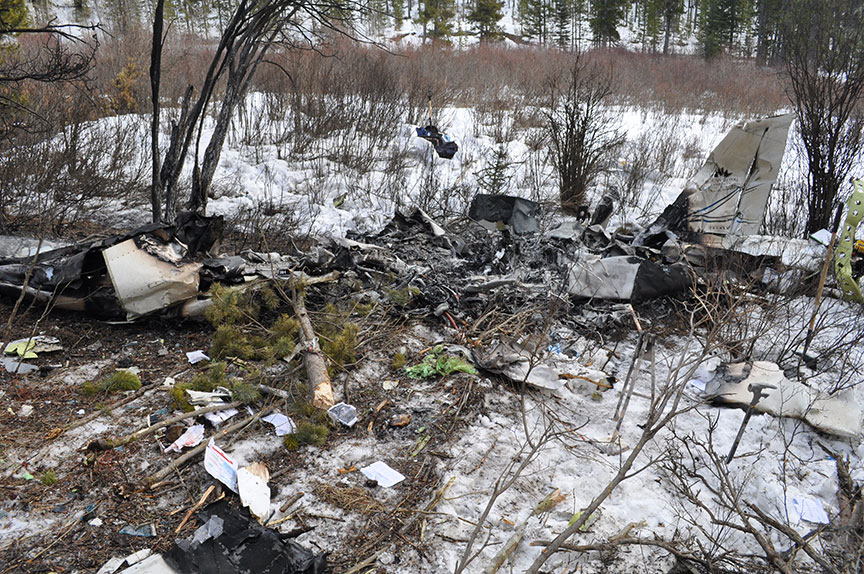Loss of control and collision with terrain
Mount Royal University
Tecnam P2006T, C-GRDV
Calgary/Springbank Airport, Alberta, 32 nm NW
The occurrence
On 13 February 2017, a Tecnam P2006T aircraft operated by Mount Royal University, was conducting a visual flight rules instructional flight originating out of Calgary/Springbank Airport, AB (CYBW), Calgary, Alberta. Approximately 30 minutes into the flight, the aircraft collided with terrain 32 nautical miles northwest of CYBW. There was a post-impact fire and the aircraft was destroyed. The two occupants were fatally injured.
Media materials
News release
TSB releases investigation report into fatal February 2017 collision with terrain of a training aircraft near the Calgary/Springbank Airport, Alberta
Read the news release
Update about the TSB investigation into the accident involving a Tecnam P2006T aircraft near Cochrane, Alberta
Read the news release
Deployment notice
TSB deploys a team of investigators to the site of an aircraft accident near Cochrane, Alberta
Edmonton, Alberta, 14 February 2017 - — The Transportation Safety Board of Canada (TSB) is deploying a team of investigators to the site of an aircraft accident near Cochrane, Alberta. The TSB will gather information and assess the occurrence.
Investigation information
Download high-resolution photos from the TSB Flickr page.
Class of investigation
This is a class 3 investigation. These investigations analyze a small number of safety issues, and may result in recommendations. Class 3 investigations are generally completed within 450 days. For more information, see the Policy on Occurrence Classification.
TSB investigation process
There are 3 phases to a TSB investigation
- Field phase: a team of investigators examines the occurrence site and wreckage, interviews witnesses and collects pertinent information.
- Examination and analysis phase: the TSB reviews pertinent records, tests components of the wreckage in the lab, determines the sequence of events and identifies safety deficiencies. When safety deficiencies are suspected or confirmed, the TSB advises the appropriate authority without waiting until publication of the final report.
- Report phase: a confidential draft report is approved by the Board and sent to persons and corporations who are directly concerned by the report. They then have the opportunity to dispute or correct information they believe to be incorrect. The Board considers all representations before approving the final report, which is subsequently released to the public.
For more information, see our Investigation process page.
The TSB is an independent agency that investigates air, marine, pipeline, and rail transportation occurrences. Its sole aim is the advancement of transportation safety. It is not the function of the Board to assign fault or determine civil or criminal liability.
